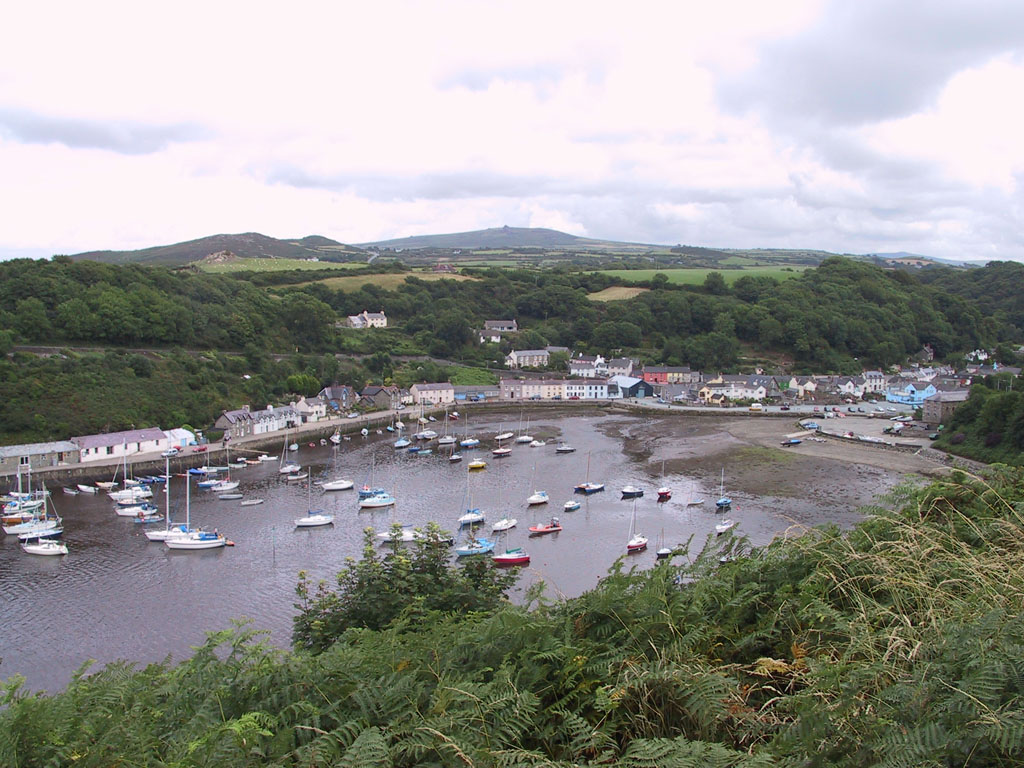 BBC News
BBC NewsBorrowing was £17.4bn last month, the second highest October figure since monthly records began in 1993.

Finito World
Not all turning points arrive with headlines. Sometimes they arrive as engineering projects. The announcement that Stena Line will invest up to £20 million in a new linkspan bridge at Fishguard port may seem, at first glance, a purely functional decision — the replacement of a 50-year-old structure with something newer, wider, more adaptable.
But look again, and what you see is a symbol of resilience — and perhaps the beginning of a renaissance for a part of Wales too often bypassed by both infrastructure and imagination.
For the uninitiated, a linkspan is a sort of drawbridge, allowing vehicles to move smoothly on and off a ferry. The current one at Fishguard, installed in the 1970s, has been approaching the end of its working life for some time. A previous project to replace it collapsed in 2018, leaving doubts about whether this small but strategic port had much of a future.
This time, the commitment is real — and long term. Stena Line is calling it an investment “for the next 30 to 40 years.”
A Port Tested by Storm
If anything underlined Fishguard’s importance, it was Storm Darragh in December 2024, which temporarily shut down Holyhead port. Suddenly, Fishguard — often seen as the quieter sibling in Welsh maritime logistics — was thrust into a frontline role, handling freight and accommodating the largest ferry ever to dock there, the Stena Adventurer.
The port didn’t just cope. It excelled. As haulier Peter Harding put it, “The staff really upped their game… it was unbelievable.” In that moment, Fishguard proved its worth — not just to the county, but to the country.
Infrastructure, Resilience, and Opportunity
This investment, then, is more than overdue maintenance. It’s a strategic play for national resilience. As Stena Line’s Ian Davies explained, the new infrastructure will allow the port to accommodate a wider range of vessels, increasing flexibility and future-proofing the route to Rosslare in Ireland.
That’s good news for trade. But it’s also good news for people.
Already, around 100 local jobs are linked to the Fishguard-Rosslare route. A modernised port opens the door to more — not just in logistics, but in maintenance, marine services, local supply chains, and even tourism. Every ferry arrival brings not just goods, but possibility.
And while the port will temporarily close for part of the 2026 construction phase, the long-term gain far outweighs the short-term disruption.
A Boost for North Pembrokeshire
One of the most pointed observations came from Harding, who noted that “South Pembrokeshire gets the spotlight”, but Fishguard’s moment has come. He’s right.
Too often, regional development focuses on existing hubs — a strategy that leaves swathes of the country under-leveraged and under-valued. This investment bucks that trend. It says: North Pembrokeshire matters. Peripheral does not mean expendable.
At a time when many young people feel they must leave their communities to find meaningful work, infrastructure like this can change the narrative. When the link between regional ports and international trade is strengthened, it strengthens everything — local pride, employment pathways, and Britain’s post-Brexit logistics strategy.
Maritime History Meets Modern Momentum
Fishguard is no stranger to maritime importance. Its history is rich — from Viking landings to the last invasion of Britain in 1797. But this linkspan project is not about history. It’s about what’s next.
And what’s next is a future where smaller towns don’t have to choose between tradition and relevance. Where connectivity isn’t just a buzzword but a drawbridge to opportunity — for hauliers, for hospitality, for young apprentices entering the marine industry, and for families whose livelihoods depend on steady work in solid communities.
Final Thought
There is, in the best kind of infrastructure, a quiet nobility. A port isn’t glamorous. A linkspan isn’t dramatic. But they are what keep a country moving — and what make it possible for goods, ideas, and people to flow across boundaries.
In Fishguard, a new bridge is being built — not just across the water, but across decades of underinvestment.
It’s a bridge worth watching.